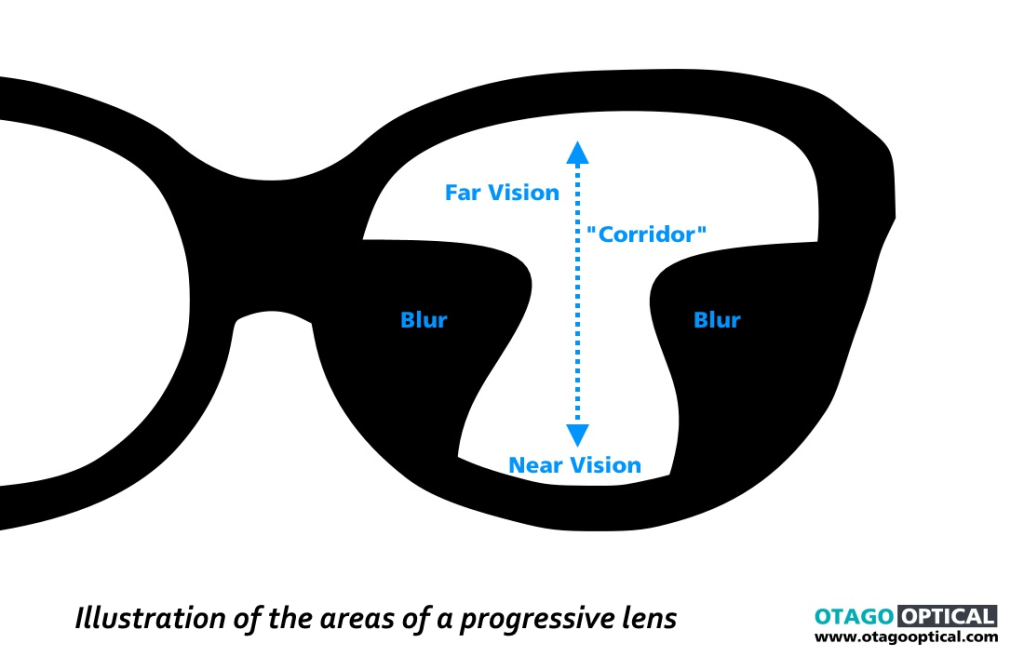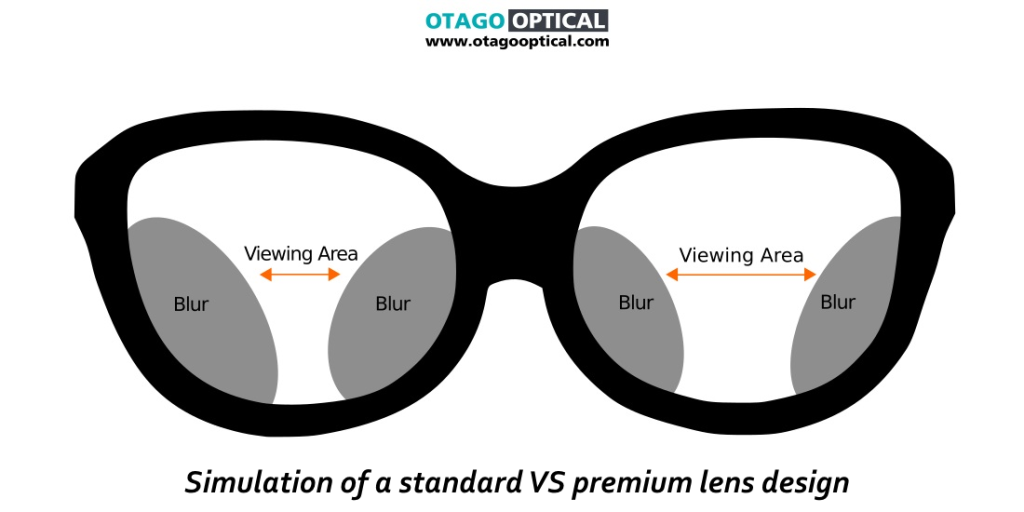
The Big 40
40 years old – that’s when you may start realising that near work starts to get difficult. Holding your reading material further away in order to see more clearly, or feeling more eye strain with prolonged hours of computer work are common first symptoms of a condition known as presbyopia, or sometimes known as 老花 (directly translated to ‘old flower’).
Progressive Lenses
Thankfully, there are glasses that can help us with presbyopia, making the big 40 a little less scary. Besides the usual reading glasses that come with a single prescription or power that we can wear in order to do near tasks like working on the computer or doing paperwork, there are also progressive lenses.
Progressive lenses come with multiple ‘powers’ within the lenses, allowing us to see both far and near using the various areas within the lenses. As the name suggests, the lenses progress from the distance prescription when looking straight ahead, to the near prescription when looking downwards towards the bottom of the lenses.

Choosing the Right Frame
Unlike single vision (or ‘single-use’) lenses like reading glasses, as there are more ‘powers’ within the progressive lenses itself, it is ideal to use a frame that has sufficiently large in terms of height, which would give a larger area for the prescription to progress from the distance to the near vision. Using a frame that is too short may cause the reading area to be cut away, or a smaller, more restricted reading area.
Frames with nose pads also make it easier for adjustments to be made, especially for wearers with nose bridges that are less prominent. If the frame sits too close to the face, the wearer may have to look further downwards in order to access the reading area, making it less comfortable with longer periods of near work.
Premium Designs
With multiple prescriptions within a progressive lens, there will inevitably be distortions. These can feel like astigmatism, and are more pronounced towards the sides of the lenses, with the centre vertical ‘corridor’ of the lenses remaining clear.
With improvements in technology, wearers can now opt for more premium lenses, reducing the amount of distortion and improving adaptability. While these do not remove the distortions totally, they can improve the wearer’s experience, and also make it easier for first-time users to get used to wearing
progressive lenses.
Premium lens designs generally use freeform technology, which means the lenses are made-on-order and can be customised with various parameters depending on the wearer’s usage and preference, and may take into consideration additional calculations such as working distance to further optimise the lenses for the finest vision and comfort.

Buying Progressive Lenses
While progressive lenses provide great convenience, allowing you to see both distant and near using just one pair of spectacles may not always be for everyone or satisfy everyone’s lifestyle requirements.
To know if progressive lenses are suitable for you, it is recommended that you visit an experienced optician or optometrist, who will be able to give advice through understanding your visual requirements, expectations, and lifestyle and provide the appropriate solutions to best fit your needs.
Progressive lens prices may also vary from store to store, depending on the brands and types of progressive lenses they offer, as well as whether the eyewear selection is branded. Hence, it is prudent to compare and find a store and practitioner that you are comfortable with to ensure that you have a wonderful experience getting your new glasses.
_
Otago Optical provides a wide range of progressive lenses to suit your work and lifestyle requirements,
as well as your budget, whether you are a seasoned progressives wearer or want to try it out for the
first time. For more information on this topic, check out Otago Optical’s Blog or visit them at 264 South Bridge Road 03-01 Singapore 058813.

